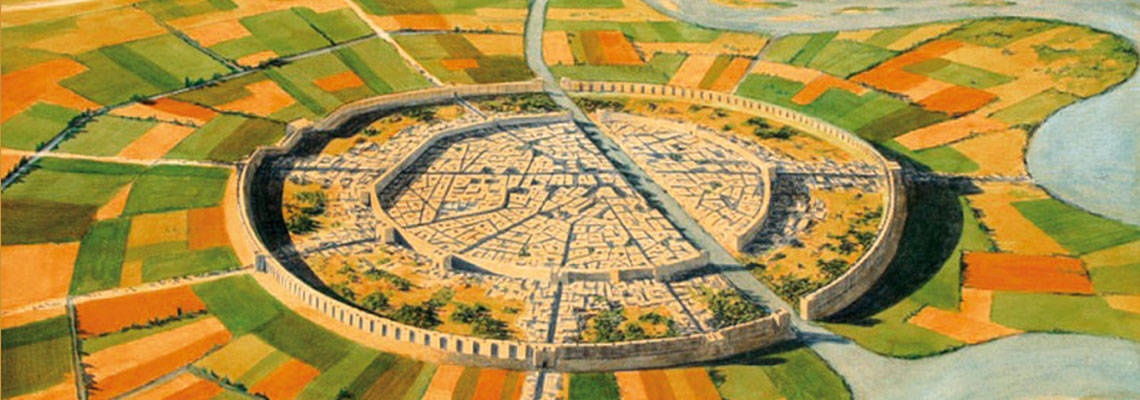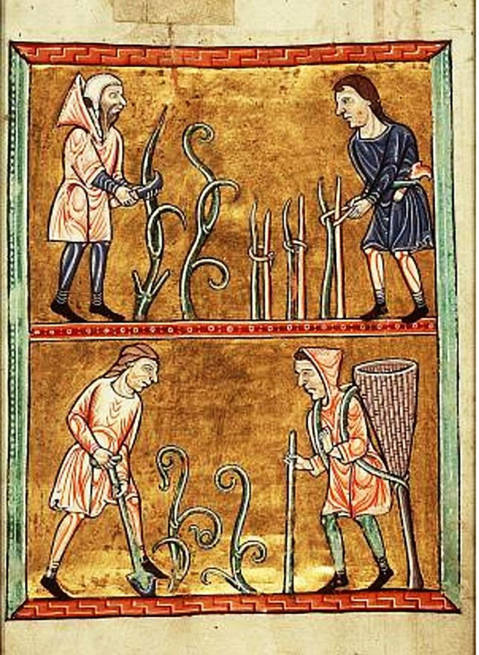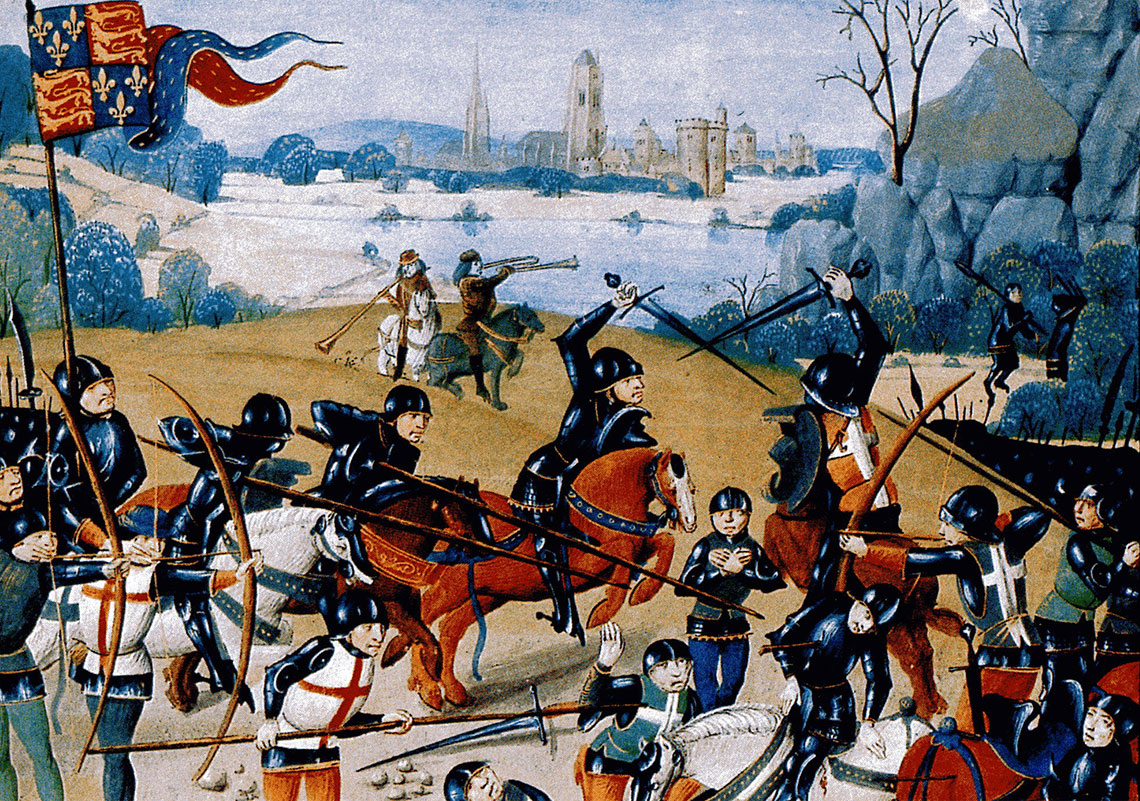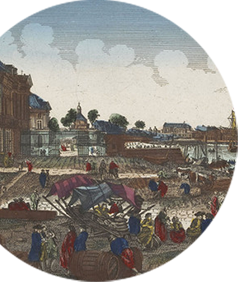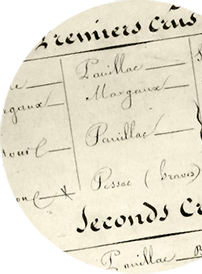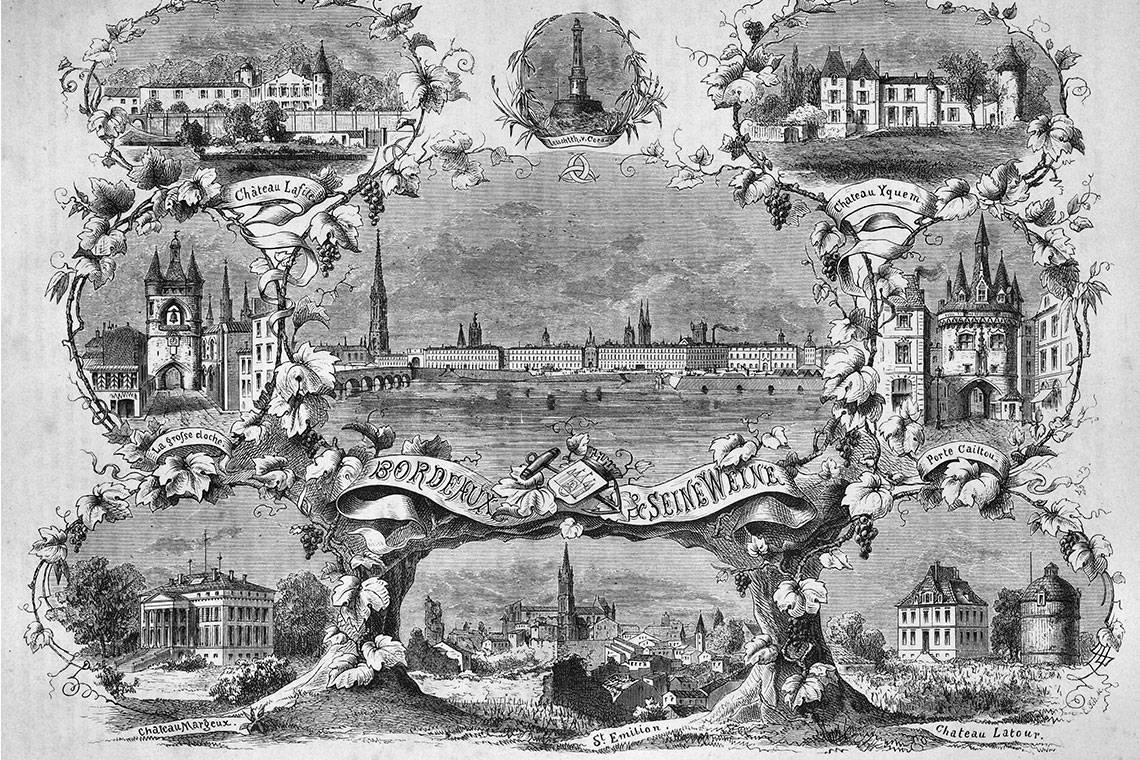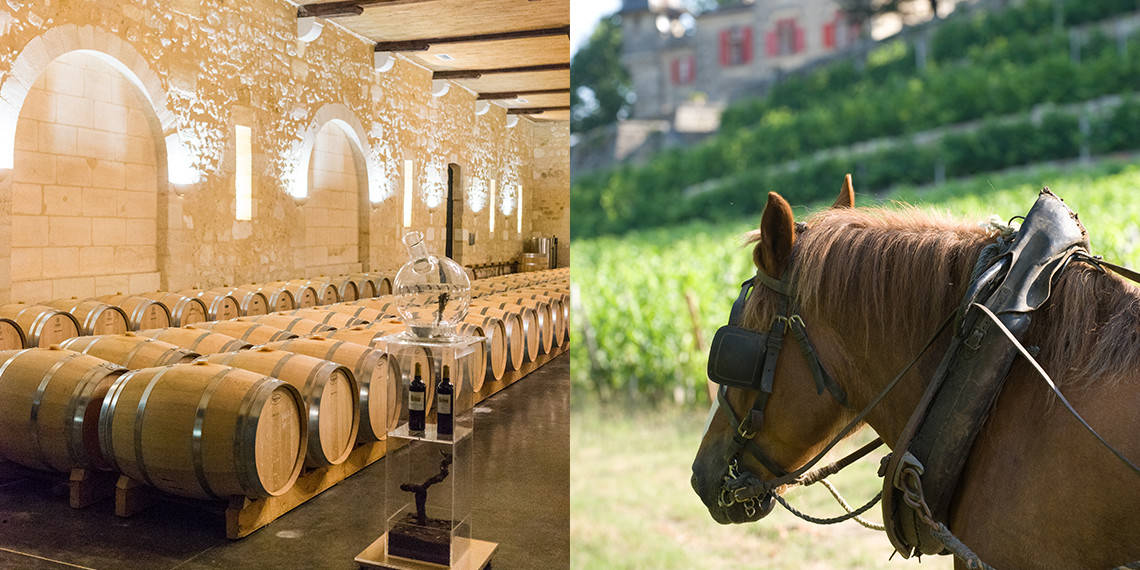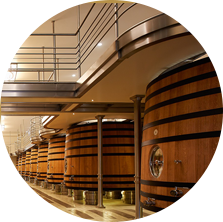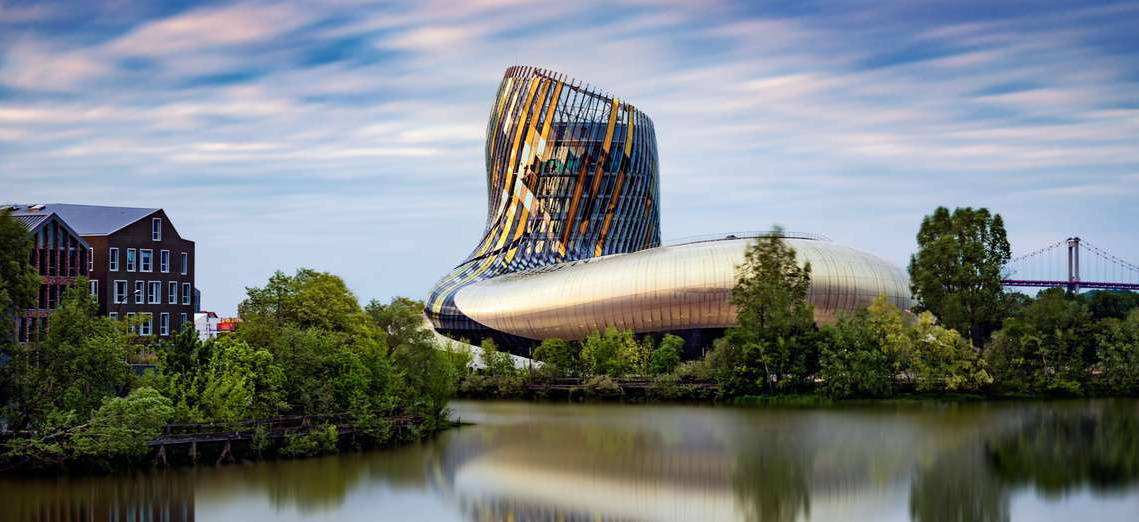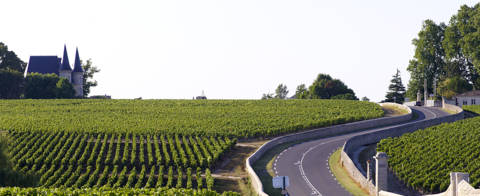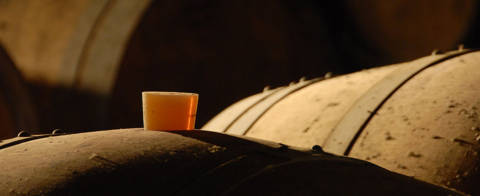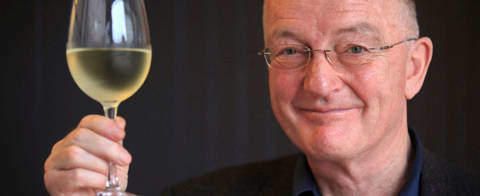• Quality improved with the 1855 Classification system, at the request of Napoleon III, to mark the World’s Fair.
• Powdery mildew, a dreadful vine disease, hit the vineyards in 1851. In 1857 it was discovered that spraying sulphur on the vines could eliminate the disease!
• Between 1875 and 1892, it was phylloxera’s turn to hit, destroying the entire vineyard. Eventually the vines were saved by grafting Bordeaux scions onto American rootstock that could resist the disease.
• Mildew followed in phylloxera’s trail. This parasitic fungus was brought under control when Bordeaux mixture was invented, a blend of slaked lime and copper sulphate.
